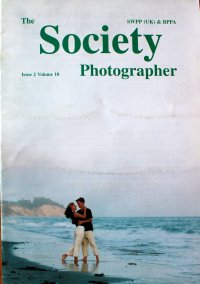articles/Weddings/colourmewild-page1
Colour me Wild! - part 1 of 1 2 3 4 5
by Winston Ingram Published 01/04/2000
Well here we are in the 21st Century, and nothing much seems to have happened, I haven't grown any more hair, my wife hasn't aged 30 years or lost 500 lbs so it's things as usual. But that doesn't mean we all have to sit down and do nothing. I've already got my new advertising campaign in place, I've already got my working year underway and we're hoping it will be at least as good if not better than the last two years.
So as fellow professional photographers, hopefully by this time you've done something similar. The work is out there, the right type of work is out there, all you've got to do is to make the effort, show the quality, and don't forget that having a professional organisation behind you and getting your professional qualifications - if you haven't already got them - could be considered the most important things you need to make your career successful as a professional photographer.
I wonder how many of you out there have considered making either all or part of your living as professional printers, particularly in the realms of colour. As you know, more and more people are going digital, not necessarily a good move but fine for us old fashioned photographers of the 20th Century who are still steeped in the values, quality and traditions of silver halide.
What it means is that over the next few years there will be less and less good black and white and colour printers to go round, therefore the work will increase, not to mention the benefits of doing your own work in-house and cutting down the turn around time to your valuable clients. To be able to turn round good quality and not have to worry about a third party who may or may not be doing your work to the standard it should be done and charging you an arm and a leg for it in the process. So let us right away dismiss the old wives tales of how difficult colour printing is. And I will give you now, a very very easy step by step system which will guarantee you to be able to make a good colour print within the first hour.
Chemistry for colour printing has come along way over the last few years and I must admit the manufacturers have made life an awful lot easier for us. There is less smell, there is less problem with mixing, and of course with the introduction of RA4 for printing from colour negatives you've only got a two bath process to worry about, both with the same times and temperatures. So what could be easier than that! The chemistry I prefer is photo-speed RA4 mono. This consists of two bottles; a developer, which is bath no. 1 and a bleach fixer, which is bath no. 2.
The two most important advantages of this particular make of chemical is firstly; you have all the various mixtures in one bottle of developer for the development and all the various mixtures of chemical in one bottle for the bleach fix, so instead of having lots of little bottles to mix up together and use a starter as well, you just have these two bottles. The chemicals are all in "suspension" (a bit like a bottle of medicine where we have different layers). You shake the bottles very vigorously - this usually takes about 10 minutes - and you shake them until all the globular looking chemistry has gone into the solution, i.e. it has all become one liquid. Once you have done this - it only has to be done once - you then mix it with the equivalent amount of water and then you're ready to "rock and roll"! The other advantage is that it's what is called a "room temperature" chemistry.
You are currently on page 1
- Colour me Wild! page 1
- Colour me Wild! page 2
- Colour me Wild! page 3
- Colour me Wild! page 4
- Colour me Wild! page 5
1st Published 01/04/2000
last update 09/12/2022 14:52:40
More Weddings Articles
There are 0 days to get ready for The Society of Photographers Convention and Trade Show at The Novotel London West, Hammersmith ...
which starts on Wednesday 15th January 2025





